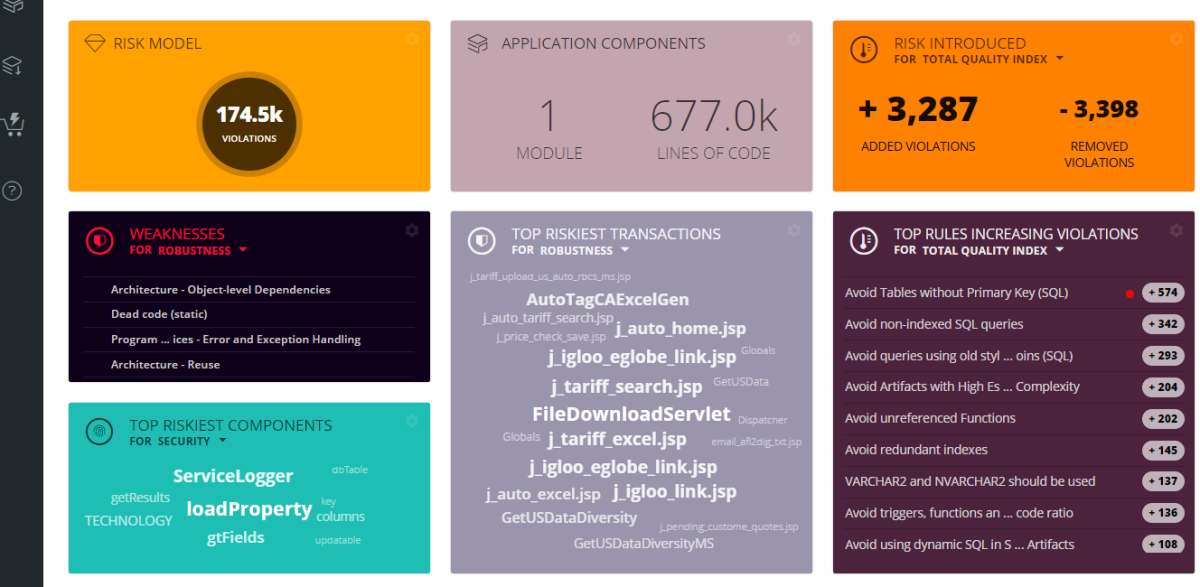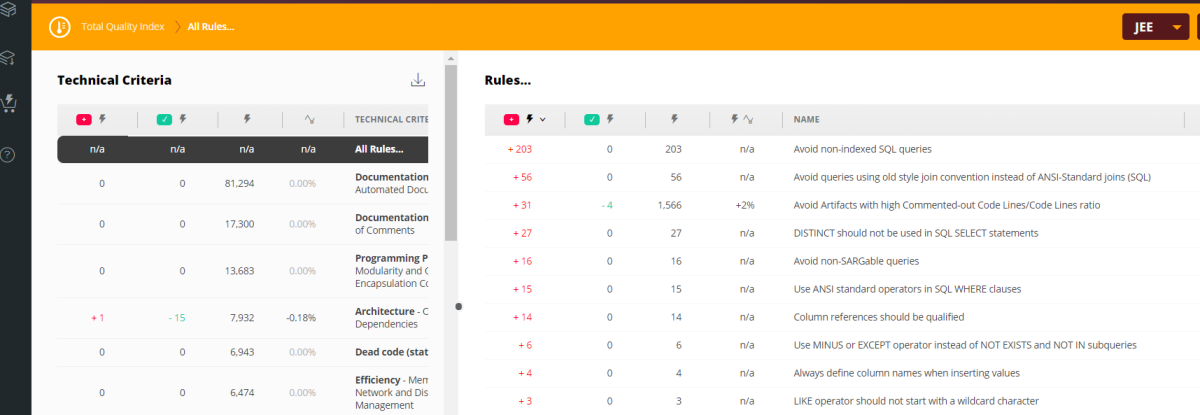Use case 4 - JEE, HTML5 and Oracle
Introduction
After moving from Oracle AIP to SQL Analyzer as explained here Transitioning from Oracle Server, at the end of the new scan the following report has been generated: SQLAnalyzerMetricsReport.csv.
During transition, Oracle source will not change, the same extraction will be now analyzed by SQL Analyzer. A new UA analysis unit, equivalent of all previous Oracle analysis units, has been added. Dependency between “JEE and the new SQL analysis unit”, and “HTML5 analysis unit and the new SQL analysis unit” has been added at the end.
New dashboard

Now, you can also note SQL quality rules applied on client code, e.g.:

Numbers
| Before | After |
|---|---|
| Nb of modules: 1 Nb of active analysis units: 54 Nb of inactive analysis units: 0 Total nb of analysis units: 54 Nb of saved objects: 104648 |
Nb of modules: 1 Nb of active analysis units: 51 Nb of inactive analysis units: 0 Total nb of analysis units: 51 Nb of saved objects: 103291 |
Number of applications with full call graph:
1 (#32602) |
Number of applications with full call graph:
1 (#32602) |